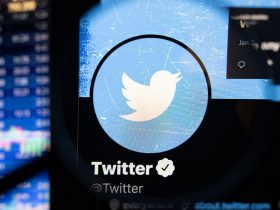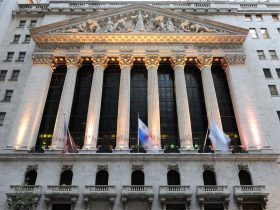Silicon Valley Financial institution (SVB) was shut down in March 2023 by the California Division of Monetary Safety and Innovation. Primarily based in Santa Clara, California, the financial institution was shut down after its investments drastically decreased in worth and its depositors withdrew giant quantities of cash, amongst different components. Later in March, First Residents Financial institution purchased up all deposits and loans of the failed financial institution.
Financial institution failures like this have occurred earlier than¡ªthere have been greater than 550 banks shut down between 2001 and the beginning of 2023. However this one was significantly noteworthy. Not solely did it come at a time when many individuals within the U.S. already feared a recession, nevertheless it was additionally the biggest financial institution to fail since Washington Mutual closed its doorways amid the monetary disaster of 2008.
That can assist you perceive what precisely went mistaken with Silicon Valley Financial institution, we¡¯ll dive a bit deeper into the historical past of the financial institution, the occasions main as much as the collapse, and what it means for depositors, traders, and the financial system normally.
Key Takeaways
- Silicon Valley Financial institution (SVB)¡ªthe sixteenth largest financial institution in america¡ªwas shut down by federal regulators on March 10, 2023.
- The financial institution¡¯s failure got here on account of a number of components, together with its investments dropping worth and its depositors withdrawing giant quantities of cash. In response to report by the Federal Reserve, blame was in the end attributed to the financial institution's administration, the regulator, and social media.
- Within the aftermath of the collapse, federal regulators promised to make all depositors entire, even for these funds that weren¡¯t protected by the Federal Deposit Insurance coverage Company (FDIC).
- The Federal Reserve took steps following the collapse of SVB to enhance confidence within the banking system and stop future banking failures, together with its Financial institution Time period Funding Program.
- First Residents Financial institution struck a cope with the FDIC to purchase SVB's deposits and loans, along with sure different belongings.
What Was Silicon Valley Financial institution?
Silicon Valley Financial institution (SVB), a subsidiary of SVB Monetary Group, was the sixteenth largest financial institution in america. The financial institution had belongings of about $209 billion in December 2022.
Silicon Valley Financial institution supplied enterprise banking companies for firms at each stage, nevertheless it was significantly well-known for serving startups and venture-backed companies. In response to the corporate¡¯s web site, 44% of the venture-backed know-how and healthcare preliminary public choices (IPOs) in 2022 have been purchasers of Silicon Valley Financial institution.
Historical past of Silicon Valley Financial institution
Throughout a poker sport, Invoice Biggerstaff and Robert Medearis got here up with the concept for Silicon Valley Financial institution. And in 1983, the 2, together with the financial institution¡¯s CEO Roger Smith, opened the primary department in San Jose, California. It went public in 1988 and, in 1989, moved to Menlo Park in an effort to cement its presence within the enterprise capital world.
Silicon Valley Financial institution finally grew to be one of many largest business banks within the U.S. It noticed main progress throughout and after the pandemic between 2019 and 2022, when it almost tripled in measurement, rising within the ranks from the thirty fourth largest financial institution to the sixteenth.
Why Did Silicon Valley Financial institution Fail?
Silicon Valley Financial institution noticed huge progress between 2019 and 2022, which resulted in it having a major quantity of deposits and belongings. Whereas a small quantity of these deposits have been held in money, a lot of the extra was used to purchase Treasury bonds and different long-term money owed. These belongings are inclined to have comparatively low returns but in addition comparatively low threat.
However because the Federal Reserve elevated rates of interest in response to excessive inflation, Silicon Valley Financial institution¡¯s bonds turned riskier investments. As a result of traders may purchase bonds at increased rates of interest, Silicon Valley Financial institution¡¯s bonds declined in worth.
As this was taking place, a few of Silicon Valley Financial institution¡¯s clients¡ªlots of whom are within the know-how trade¡ªhit monetary troubles, and plenty of started to withdraw funds from their accounts.?
To accommodate these giant withdrawals, Silicon Valley Financial institution determined to promote a few of its investments, however these gross sales got here at a loss. SVB misplaced $1.8 billion, and that marked the start of the top for the financial institution.
Some individuals consider that Silicon Valley Financial institution¡¯s failure began far earlier with the rollback of the Dodd-Frank Act, which was the most important banking regulation that was put in force in response to the monetary disaster of 2008.
As part of Dodd-Frank, banks with greater than $50 billion in belongings could be topic to further oversight and guidelines. However the 2018 Financial Progress, Regulatory Aid, and Client Safety Act, signed into regulation by President Donald Trump, considerably modified that requirement. As an alternative of setting the edge at $50 billion, the 2018 regulation elevated it to $250 billion.
Regardless of being the sixteenth largest financial institution within the nation, Silicon Valley Financial institution didn¡¯t have sufficient belongings to be topic to the additional guidelines and oversight. If the edge was by no means modified, SVB would have been extra carefully watched by regulators.
In a report issued on April 28, 2023, the Federal Reserve formally attributed blame for the financial institution’s failure to SVB’s senior administration crew for mismanaging the funding threat of their steadiness sheet in addition to the board of administrators for not performing its obligation as a verify on senior administration. Moreover, the Fed additionally attributed some accountability to its personal regulatory officers for not recognizing the financial institution’s vulnerabilities because it quickly grew between 2019 and 2021 and for not appearing on important issues it did determine associated to threat administration earlier than the financial institution failed. The Fed additionally cited the 2018 change in Fed supervisory requirements and the influence of social media with a extremely networked and concentrated depositor base as contributing components.
A Timeline of the Collapse
From an outdoor perspective, the failure of Silicon Valley Financial institution occurred quickly over the span of simply a few days. Right here¡¯s a timeline of occasions:
- March 8: Silicon Valley Financial institution introduced its $1.8 billion loss on its bond portfolio, together with plans to promote each widespread and most well-liked inventory to lift $2.25 billion. Within the aftermath of this announcement, Moody’s downgraded Silicon Valley Financial institution¡¯s long-term native foreign money financial institution deposit and issuer scores.
- March 9: The inventory for Silicon Valley Financial institution¡¯s holding firm, SVB Monetary Group, crashed on the market opening. Different main banks additionally noticed their inventory costs take successful. Moreover, extra SVB clients started withdrawing their cash, for a complete tried withdrawals of $42 billion.
- March 10: Buying and selling was halted for SVB Monetary Group inventory. Earlier than the financial institution may open for the day, federal regulators introduced they might take it over. After regulators have been unable to discover a purchaser for the financial institution, deposits have been moved to a bridge financial institution created and operated by the FDIC, with a promise that insured deposits could be out there by Monday, March 13.
- March 12: Federal regulators announce emergency measures in response to the Silicon Valley Financial institution failure, permitting clients to recuperate all funds, together with those who have been uninsured.
- March 17: Silicon Valley Financial institution’s guardian firm, SVB Monetary Group, filed for chapter.
- March 26: First Residents Financial institution purchased all of Silicon Valley Bridge Financial institution apart from $90 billion of securities and different belongings that remained in FDIC receivership.
Necessary
HSBC Holdings Plc introduced on March 13 that it might purchase the U.Okay. arm of the corporate, Silicon Valley Financial institution UK Restricted, for 1 pound.
Influence on Depositors and Buyers
The FDIC insures financial institution deposits of as much as $250,000 per depositor per financial institution for every account class. In different phrases, in case you had $250,000 in a Silicon Valley Checking account, you’ll get all your a reimbursement.
Sadly, a lot of the accounts in Silicon Valley Financial institution held greater than $250,000 of deposits, which means a lot of the funds have been uninsured. Most often, this may imply account holders would lose any cash above that threshold.
To assist, the Federal Reserve introduced on March 12 that it might invoke a systemic threat exception, which means that each one depositors could be made entire, even for these funds that have been uninsured.
Nonetheless, traders gained¡¯t be so fortunate. Whereas the FDIC can shield depositors from losses, it might probably¡¯t do the identical for shareholders and unsecured debt holders. In different phrases, people and establishments that owned inventory in SVB Monetary Group might not get their a reimbursement.
Why Did the Authorities Promise to Make SVB Depositors Entire?
Federal regulators determined to completely insure and shield all of Silicon Valley Financial institution¡¯s depositors and their balances for concern of contagion¡ªthe influence the financial institution¡¯s collapse may have on the financial system as a complete.
Amid the financial institution collapse, it was not simply Silicon Valley Financial institution whose inventory worth plummeted. Different banks noticed their inventory costs drop too.
A high-profile financial institution failure like this one may cut back shopper confidence within the banking system. That insecurity may create extra of the issue that contributed to Silicon Valley Financial institution¡¯s failure¡ªaccount holders dashing to withdraw deposits from a financial institution that doesn¡¯t have the funds to cowl them.
In the end, this threat of contagion may have an effect on not simply banks however the financial system as a complete.
Who Paid for the Rescue?
When information unfold of regulators¡¯ choice to make all depositors entire, many instantly questioned what that will imply for taxpayers.
When the Federal Reserve made its announcement, it clarified that not one of the losses could be taken on by taxpayers. As an alternative, the cash will come from the FDIC, which is the company tasked with insuring financial institution deposits. The cash the FDIC makes use of to cowl these losses comes from quarterly premiums that each one insured banks pay to the company.
The FDIC estimated on March 26, 2023, that the price of the failure of SVB to its Deposit Insurance coverage Fund could be about $20 billion.
However it might be too simplistic to say not one of the losses might be borne by taxpayers.?
Whilst you might not pay for the losses instantly along with your tax {dollars}, some losses may in the end trickle down. For instance, in case your financial institution has to pay extra for deposit insurance coverage, it’d cost you the next rate of interest on a mortgage or pay you a decrease share of curiosity in your financial savings account.
Be aware
Within the lead-up to the Silicon Valley Financial institution collapse, the Federal Reserve and different central banks had been rising rates of interest as a method to combat world inflation. However after the failure of SVB, Signature Financial institution, and Silvergate Capital, the Fed's subsequent price enhance was decrease than anticipated previous to the financial institution failures.
What Is the Financial institution Time period Funding Program?
Because of the Silicon Valley Financial institution collapse, the federal government introduced the Financial institution Time period Funding Program (BTFP), a program approved by the Federal Reserve that provides loans to banks, credit score unions, and different deposit establishments.
These loans, which might final for as much as one yr, assist monetary establishments to satisfy their depositors’ wants. This system additionally helps to make sure that, when banks want money, they gained¡¯t be pressured to shortly promote high-quality securities to get it.
This system went into impact on March 12, 2023, and might be in impact till not less than March 11, 2024.
What Occurs to Your Cash If the Financial institution Collapses?
In case your financial institution collapses, your cash must be protected. Almost all banks are protected by FDIC insurance coverage, which covers as much as $250,000 per depositor per account possession class. If the FDIC can¡¯t discover a wholesome purchaser for the financial institution, it’ll pay depositors the cash that was of their account. Nonetheless, in case your account steadiness exceeds $250,000, chances are you’ll not recuperate the total quantity.
Are Credit score Unions Safer Than Banks?
Credit score unions aren¡¯t essentially safer than conventional banks¡ªthey’re merely a not-for-profit various. As an account holder, your cash is simply as secure in both sort of account. Simply because the FDIC insures financial institution deposits of as much as $250,000, the Nationwide Credit score Union Administration (NCUA) does the identical for credit score union deposits.
Who Owned Silicon Valley Financial institution?
Silicon Valley Financial institution was based in 1983 by Invoice Biggerstaff, Robert Medearis, and Roger Smith and was a subsidiary of SVB Monetary Group, which is a publicly-traded firm (SIVB).
It was purchased by First Residents Financial institution on March 26, 2023.
Who Have been the Essential Buyers in Silicon Valley Financial institution?
SVB Monetary Group, the guardian firm of Silicon Valley Financial institution, is primarily owned by institutional traders. The biggest shareholders embrace:
- The Vanguard Group, Inc.
- SSgA Funds Administration, Inc.
- BlackRock Fund Advisors
- Alecta Pension Insurance coverage Mutual
- JPMorgan Funding Administration, Inc.
The Backside Line
The collapse of Silicon Valley Financial institution in March 2023 represents the biggest financial institution failure for the reason that monetary disaster of 2008. And given the already-present fears of a recession, the collapse additional shook shopper confidence within the financial system.
The financial institution¡¯s failure served to remind us that there are a number of weaknesses inside the banking system, together with the shortage of oversight for banks with lower than $250 billion in belongings.
Fortunately, federal regulators responded shortly to the collapse of SVB, implementing a number of measures to cut back depositors¡¯ losses and renew confidence within the banking system and the financial system general.
Correction¡ªApril 21, 2023: A earlier model of this text incorrectly referred to the primary CEO of Silicon Valley Financial institution as Robert Smith. The proper identify is Roger Smith.













Leave a Reply